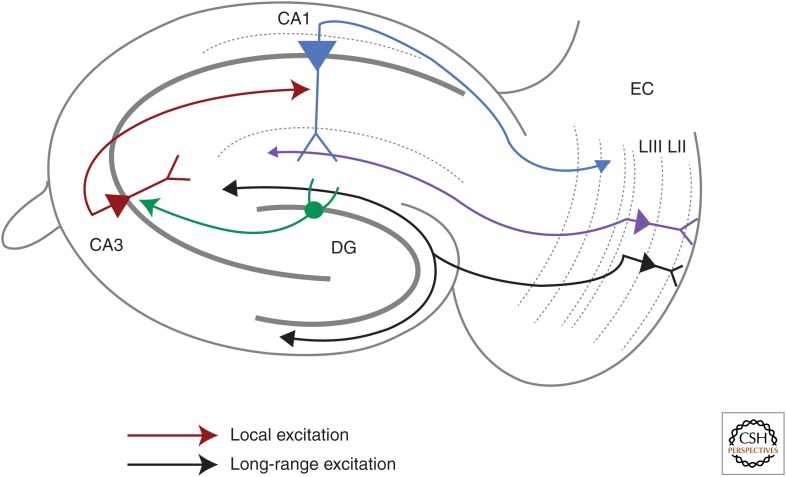Figure 1.
The classical corticohippocampal glutamatergic circuits. The classical corticohippocampal circuit comprises of glutamatergic input from the superficial entorhinal cortex (EC) layers (LII and LIII) to CA1 pyramidal neurons via the trisynaptic and monosynaptic paths; hippocampal back projections to the deep layers of EC complete the loop. Sensory signals drive the perforant path (PP, purple) inputs from EC LIII pyramidal neurons to distal CA1 pyramidal neuron dendrites (light blue). Activated EC LII pyramidal neurons send inputs to dentate gyrus (DG, black), which sends mossy fiber axons (dark green) to CA3 and then CA3 feeds onto CA1 neurons through Schaffer collateral (SC, dark red) excitatory inputs. A major output of the hippocampus arises from CA1 pyramidal neurons, which project to lateral ventricles (LVs) of EC. There is a 15-20 ms timing delay for transmission of information from EC LII to CA1 through the trisynaptic path compared with that from EC LIII to CA1 via the monosynaptic path.

